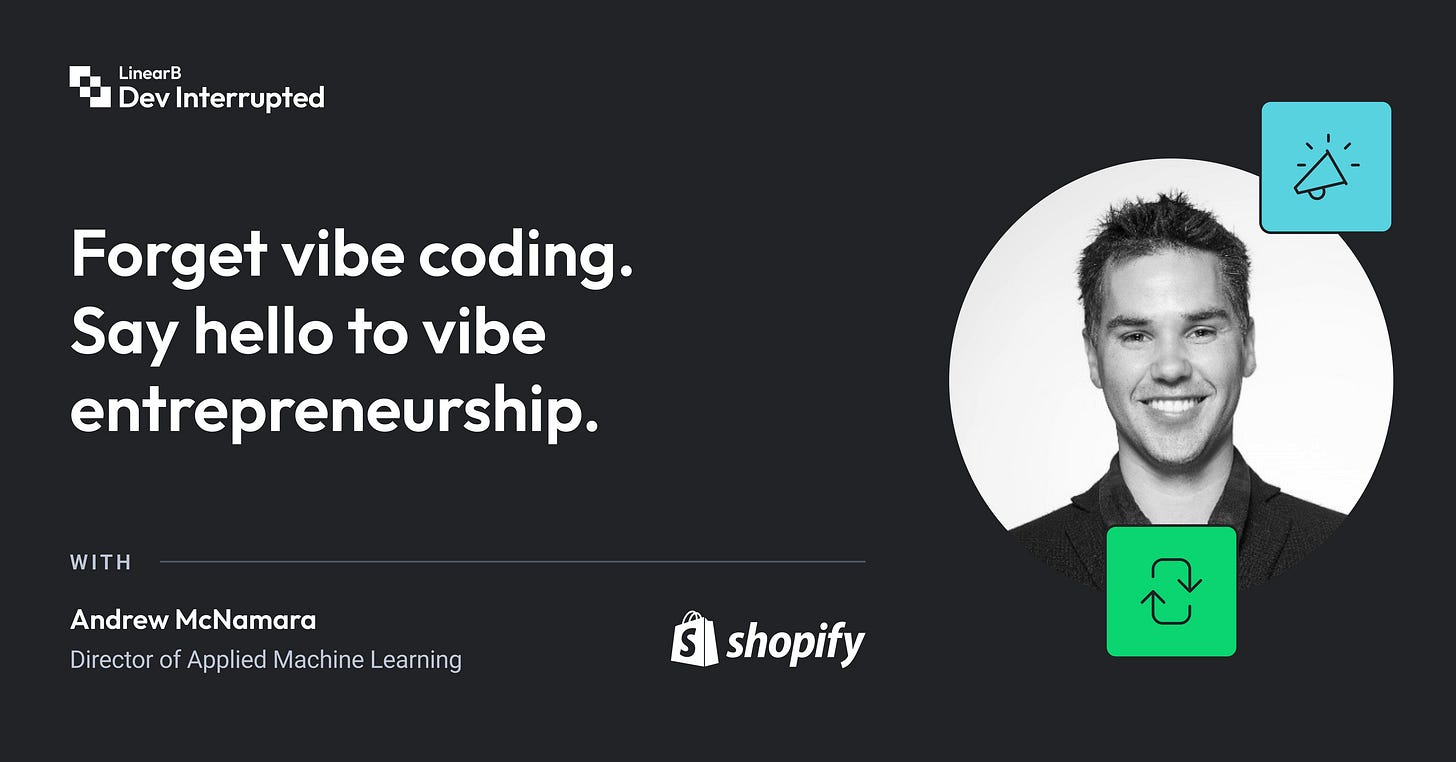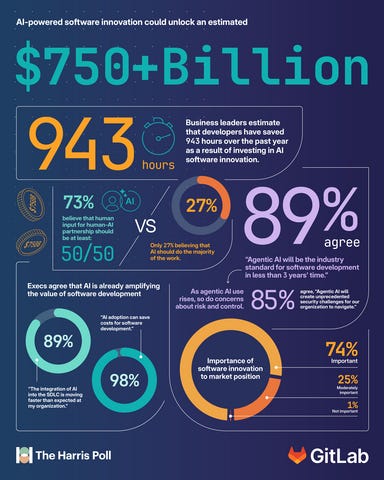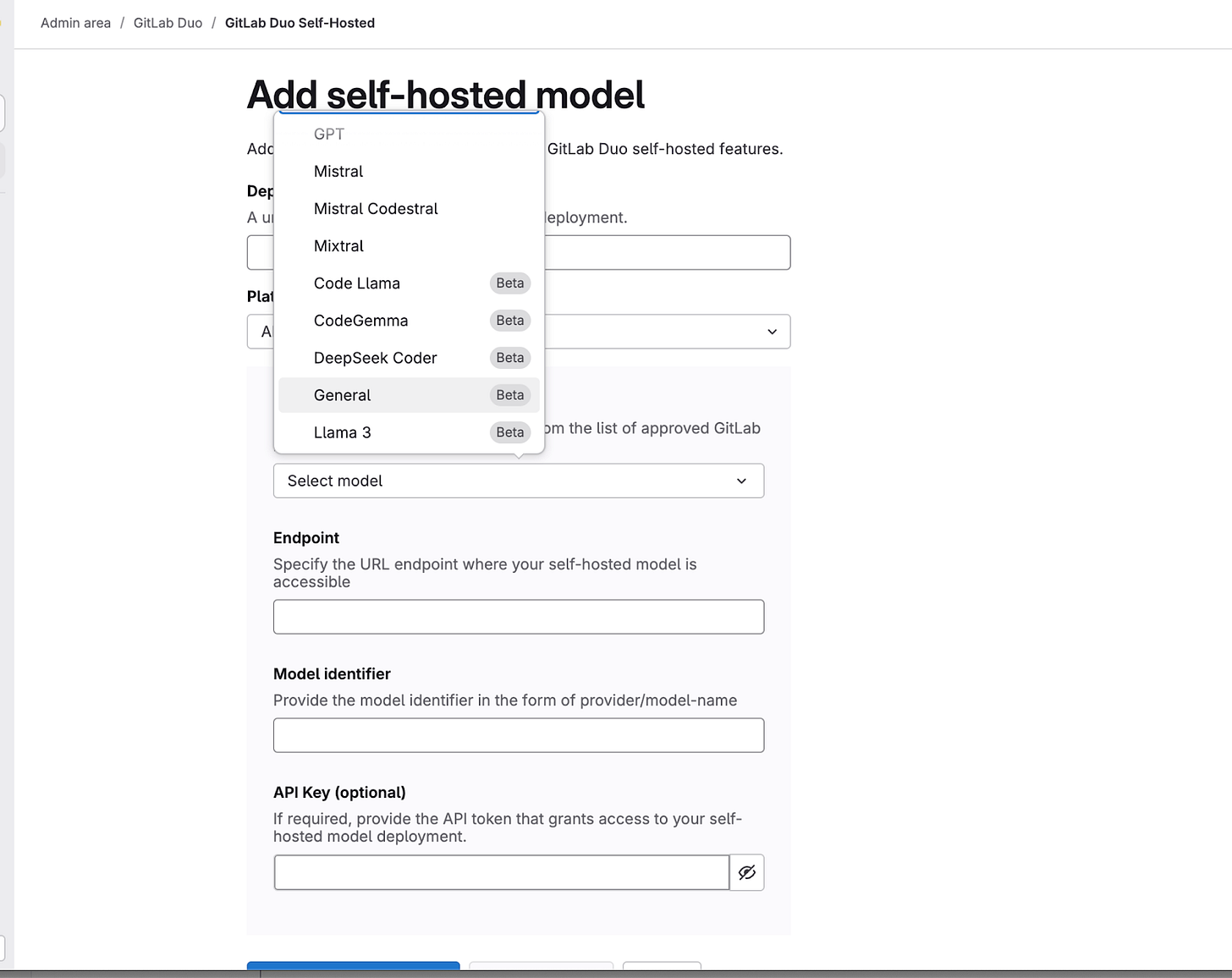Forget vibe coding. Say hello to vibe entrepreneurship. | Shopify’s Andrew McNamara
And why behind every great vibe is an even greater eval
First, there was vibe coding. Now, get ready for "vibe entrepreneurship."
Andrew McNamara, Director of Applied Machine Learning at Shopify, joins us to explain how his team is making this new era of business a reality. He shares the vision behind Shopify Sidekick, an AI co-founder designed to empower merchants by acting as their on-demand e-commerce expert. Drawing on his 16-year journey building AI assistants, Andrew reveals what it truly takes to create an AI tool that customers can trust with their livelihood.
He shares a critical insight from his applied research background: the hardest and most important part of building production-ready AI isn't the model, but the evaluation ("eval") system. Andrew breaks down Shopify's innovative approach of using an LLM-as-a-judge to measure how well they're fulfilling user goals, not just executing features. This conversation is a definitive guide to creating high-trust AI systems and offers a powerful glimpse into the future of commerce.
"Sidekick's vision is that it's basically your co-founder or your e-commerce expert that doesn't judge you. You can feel comfortable to ask any question, get expert results... Having somebody who you can reach out to answer any question you want, ask anything.” - Andrew McNamara
The Download
Engineering’s messy middle: AI budgets, bus factors, and bubble fears. 🫧
1. Execs want 50/50 AI, but can ROI keep up? 📊
GitLab’s new report shows leaders gunning for a 50/50 human-AI split (vs. today’s 75/25) and a whopping 94% are betting AI pays for itself in under 2 years. The catch? Productivity bumps are smaller than execs think, and AI-generated code adds real maintenance overhead. Check the takeaways to automate toil, guard the high-judgment work, and invest in governance before you spin up fleets of agents.
Read: The Economics of Software Innovation
2. When the bus factor hits zero 🚌
This most recent article from Mindflash nails the nightmare scenario: AI code without human context gives us a bus factor of zero. Goose egg. Nada. Up until AI, this was the opposite of what any engineering org wanted, with everyone chasing a higher and more evenly-distributed number. Has AI blinded us to lessons we’ve already learned, or does it remove the need for the bus metaphor entirely?
Read: “AI First” and the Bus Factor of 0
I’m hosting an MCP demo that connects AI experimentation to ROI 💰
Investing in AI but struggling to prove impact?
Join LinearB’s free 35-minute workshop hosted by me, your host Andrew Zigler! We’ll be looking at automations that alleviate bottlenecks in the entire SDLC, not just code gen. I’ll also be demo’ing our MCP server and showing some best practices for natural language insights on your engineering pipeline.
I’m hosting two sessions on September 17th and 18th, so register now to catch me there and receive your AI Productivity Guide for Engineering Leaders.
3. Meta halts AI hiring amid bubble fears 🧊
Zuckerberg just froze AI hiring at Meta, citing bubble risk and crunchy valuations. Previously passing out some staggering signing bonuses and packages to recruit the world’s AI talent, this shows that even the biggest AI spender is worried about spending right now. Expect more giants to follow suit as the AI spending cycle potentially cools.
Read: Meta halts AI hiring spree
4. GitLab 18.3 goes AI-native with BYOM and CLI agents 🤖
The latest release brings “bring your own model” flexibility and drops the Duo Agent Platform into VS Code, complete with Agentic Chat, Agent Flows, and CLI agents you can @mention in issues. The pattern is obvious: multi-model AI embedded directly in dev workflows. Platform teams need cost controls, guardrails, and failure planning yesterday.
Read: GitLab 18.3 released with Duo Agent Platform in Visual Studio (Beta) and Embedded views
5. AWS CEO says cutting juniors to make room for AI is “the dumbest thing I’ve ever heard” 🔥
Amazon Web Services CEO Matt Garman slammed the idea of replacing entry-level engineers with AI. His argument (and we agree): today’s juniors are tomorrow’s leaders. Cut them, and you gut your future talent pipeline. Amid AI hype, it’s a needed reminder that developer growth still matters and tomorrow’s AI power users are only now starting to enter the workforce. He adds: “My view is you absolutely want to keep hiring kids out of college and teaching them the right ways to go build software and decompose problems and think about it, just as much as you ever have.”
Read: AWS CEO says using AI to replace junior staff is 'Dumbest thing I've ever heard'









